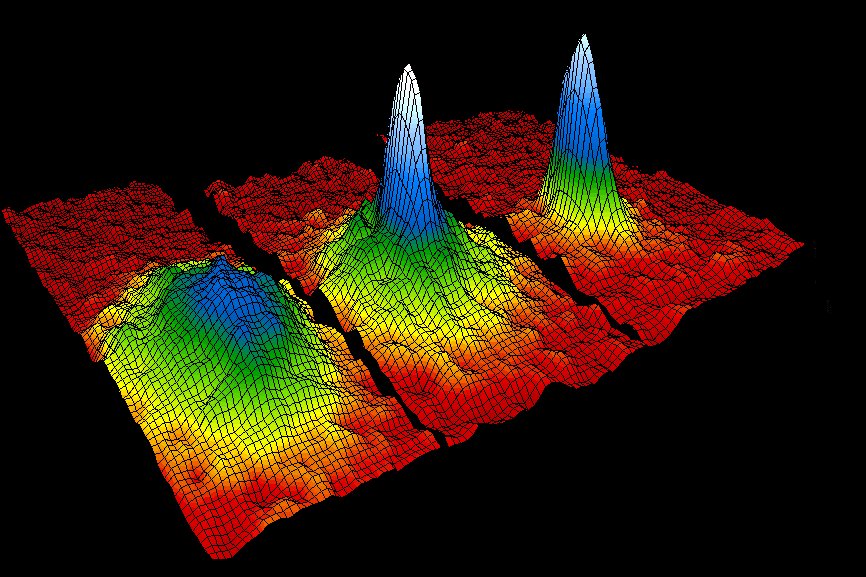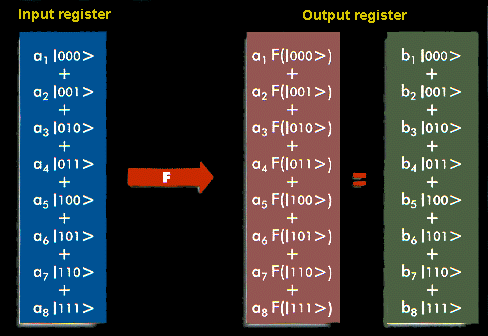Welcome
Announcements
Participants
Related Links
My Address
Syllabus
Homeworks
Lectures
Miscellaneous Files
Welcome to the home page for
Physics 212 which is the second half of Duke's
year-long undergraduate sequence in nonrelativistic quantum
mechanics. Continuing from Physics 211
in the fall semester, Physics 212 completes the
foundation of quantum mechanics and applies this foundation
to a wealth of scientific problems drawn from atomic
physics, particle physics, nuclear physics, condensed-matter
physics, astrophysics, and chemistry. Further information is
available from the course
syllabus .

These false-color images display
the velocity distribution of a cloud of rubidium atoms at
(a) just before the appearance of the Bose-Einstein
condensate, (b) just after the appearance of the condensate
and (c) after further evaporation left a sample of nearly
pure condensate. The field of view of each frame is 200 x
270 micrometers, and corresponds to the distance the atoms
have moved in about 1/20 of a second. The color corresponds
to the number of atoms at each velocity, with red being the
fewest and white being the most. Areas appearing white and
light blue indicate lower velocities.
Announcements:
Class Participants:
Related links:
Course Links:
Duke Links:
Journals:
-
Physics Focus
Easy-to-read brief summaries of recent
Physical Review Letters.
-
Physics News
Update Easy-to-read brief summaries
of general advances in Physics, often with nice graphics.
-
Physical Review Letters Online. The
premier physics journal for new important results.
-
Physics Today
Monthly magazine of the American
Physical Society.
-
Science The premier American journal
for important results in all areas of science.
-
Science News Brief nontechnical
discussions of recent advances in science.
Labs:
LaTeX and Emacs links:
Miscellaneous
Other quantum courses
Pioneers:
Quantum Computing:
Research groups:

The ability for quantum
mechanics to evolve kets in parallel using superposition
offers the possibility for a new kind of computer that can
solve certain problems far more efficiently than traditional
digital computers. Quantum computation is an excellent
example of how elementary non-relativistic quantum mechanics
continues to find exciting and important new applications..
See the web page
http://www.qubit.org/intros/comp/comp.html for an
elementary tutorial on quantum computation.
Top of this page
Department of Physics


